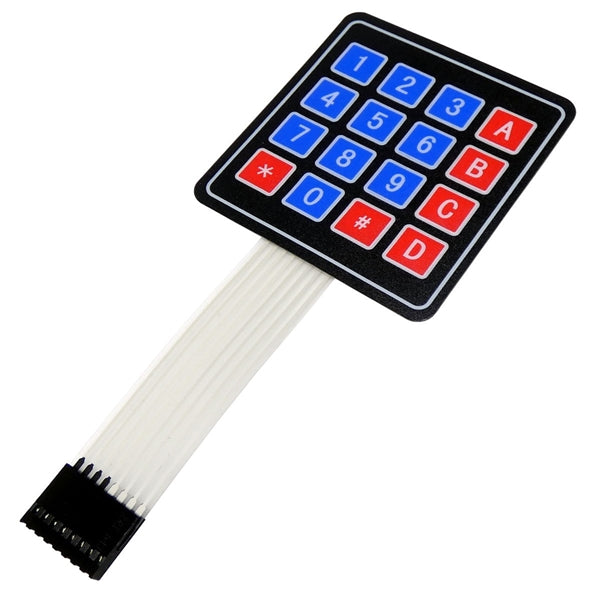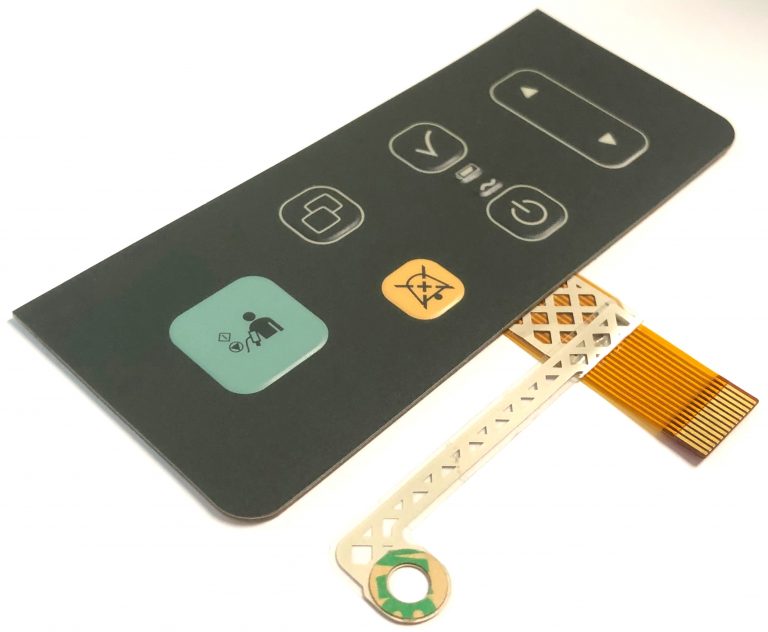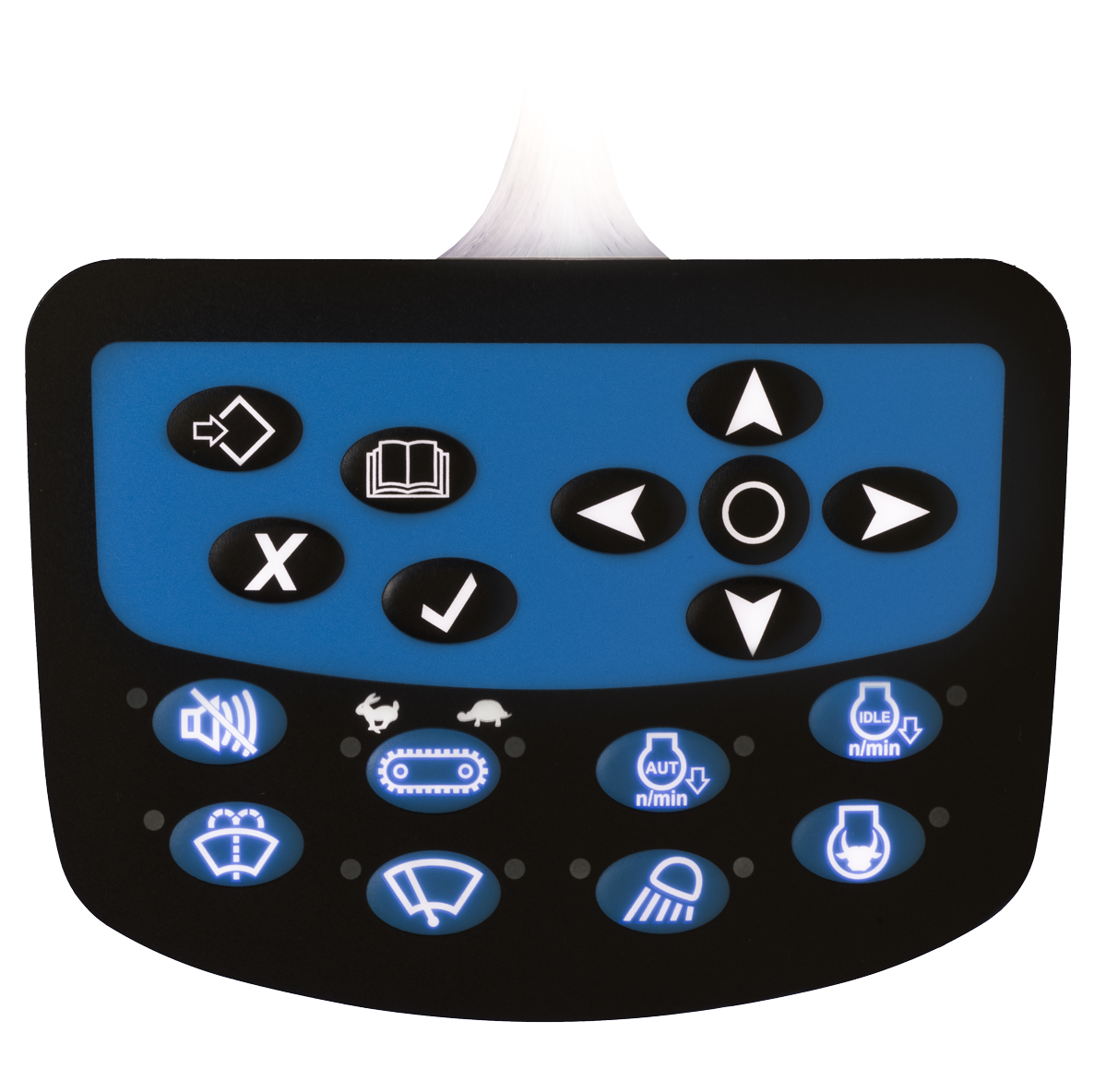If durability matters, sourcing from a reliable membrane switch manufacturer is crucial.
If durability matters, sourcing from a reliable membrane switch manufacturer is crucial.
Blog Article
Everything About Membrane Change: Understanding Its Design and Capability
When you think about the control user interfaces in contemporary devices, membrane layer switches often come to mind. Let's discover what collections membrane layer switches over apart from other control systems.
What Are Membrane Layer Switches?

Membrane buttons can also be tailored pertaining to shape, dimension, and graphics, permitting suppliers to produce one-of-a-kind user interfaces tailored to details items. In general, membrane buttons play a substantial duty in enhancing individual experience across a wide selection of applications.
Exactly How Membrane Switches Over Work
When you press a trick on a membrane button, it triggers a straightforward yet efficient system. The leading layer, frequently made of adaptable product, lowers onto a conductive layer under it. This activity bridges the gap between conductive traces, completing an electrical circuit. As quickly as the circuit shuts, it sends out a signal to the gadget's controller, which translates your input.
You'll see that the tactile responses varies based on the button layout, using either a soft click or an extra pronounced reaction. As soon as you launch the key, the membrane layer returns to its original setting, resuming the circuit and stopping the signal. This procedure happens practically immediately, making certain a receptive customer experience.
Membrane switches are prominent because of their sturdiness and resistance to dust and moisture, making them ideal for numerous applications, from house devices to medical devices. Understanding this procedure helps you appreciate their widespread usage.
Key Elements of Membrane Layer Buttons
Recognizing the vital components of membrane buttons is essential for comprehending their capability and design. The safety layer guards versus ecological variables and wear, expanding the button's lifespan. By comprehending these components, you'll get understanding right into just how membrane layer changes run and their significance in various applications.
Materials Utilized in Membrane Layer Switch Over Design
The efficiency and longevity of membrane layer switches greatly depend on the products utilized in their design. You typically come across polyester and polycarbonate as primary substratums because of their superb toughness and flexibility. These products stand up to scrapes and chemicals, making them excellent for requiring atmospheres.
The conductive layers commonly utilize silver or carbon, selected for their dependability and conductivity. membrane switch manufacturer. Silver gives exceptional performance, while carbon is a cost-effective alternative. For the overlay, you might think about a matte or glossy surface, depending upon your visual requirements and user experience
Adhesives play an essential function also; they bond layers safely and ensure long life. Make sure to choose adhesives that endure ecological aspects like temperature and moisture. Ultimately, don't forget the significance of a great printing strategy for graphics, as it enhances both capability and visual charm. Selecting the appropriate products will certainly guarantee your membrane layer switch stands the examination of time.
Design Considerations for Membrane Buttons
While making membrane layer buttons, it's essential to take into account various factors that affect their capability and individual experience. Beginning by concentrating on the layout and button size; make particular they're instinctive and easy to browse.
Do not forget the visuals layout; clear labeling and color contrast are significant for presence. Verify your style suits environmental aspects, like dampness or temperature variants, which could impact performance. Ultimately, bear in mind the importance of screening models with real individuals to gather feedback and make necessary changes. This iterative process aids you refine the style, validating it fulfills both useful and visual requirements effectively. By meticulously taking into consideration these aspects, you'll create a membrane switch that improves usability and fulfillment.
Applications of Membrane Switches
Membrane layer switches are functional components found in different applications, from commercial devices to customer electronics. You'll see their influence in makers that need resilient interfaces and in tools that profit from smooth layouts. Comprehending these applications assists you value the functionality and practicality of membrane switches in day-to-day innovation.
Industrial Equipment Use
When you're looking to boost the performance of commercial devices, membrane buttons use a reliable option that incorporates toughness with easy to use layout. These switches are perfect for harsh environments, giving resistance to dirt, dampness, and chemicals. Welcome membrane layer switches to streamline your operations and boost general efficiency.
Customer Electronic Devices Integration
In the domain name of consumer electronics, membrane layer switches play an essential role in improving individual interaction and gadget performance. You'll find them in tools like microwaves, remote controls, and gaming consoles, providing a smooth method to connect with innovation. Their smooth layout permits easy integration into different items, making controls instinctive and easy to use. With their capability to incorporate graphics and backlighting, you can appreciate a get redirected here modern aesthetic that matches the device's total appearance. Membrane switches also guarantee toughness and resistance to dirt and wetness, expanding the life expectancy of your electronic devices. By selecting membrane buttons, you improve not just the capability however additionally the style of your devices, making day-to-day interactions smooth and enjoyable.
Advantages and Drawbacks of Membrane Layer Buttons
While membrane layer switches use a variety of advantages, they additionally feature some drawbacks that you should consider. One substantial advantage is their compact design, making them excellent for space-constrained applications. They're also economical, supplying a long lasting service with a reduced production cost. In enhancement, their smooth surface is easy to clean, boosting health in atmospheres like healthcare facilities.

Nevertheless, there are negative aspects. Membrane layer switches can have a shorter lifespan compared to mechanical switches, particularly under hefty use. They can also be less responsive, which might influence customer responses during operation. If harmed, fixing them can be tough and commonly needs total substitute. Ultimately, their level of sensitivity to extreme temperature levels and ecological problems may restrict their performance in certain settings. Balancing these pros and cons will assist you identify if membrane layer buttons are the appropriate fit for your task.
Often Asked Concerns
How Much Time Do Membrane Changes Usually Last?
Membrane switches over generally last between 5 to one decade, depending upon use and environmental problems. You'll wish to evaluate variables like wear, direct exposure to wetness, and temperature level fluctuations to evaluate their durability efficiently.
Can Membrane Layer Changes Be Custom-made for Certain Designs?
Yes, you can customize membrane switches to fit certain layouts (membrane switch manufacturer). You'll have the liberty to pick shades, browse around here forms, and formats that match your job's demands, guaranteeing they mix flawlessly with your overall aesthetic
What Is the Price Range for Membrane Layer Switch Over Production?
The cost range for membrane switch manufacturing generally drops in between $1 and $10 each, depending on variables like design complexity, quantity, and materials. You can obtain quotes from makers to discover the most effective alternative.

Are Membrane Switches Over Water Resistant or Resistant?
Membrane buttons can be created to be water resistant or immune, depending upon materials used and construction techniques. If you need them for wet environments, guarantee you specify those requirements during the style procedure.
How Do Membrane Switches Contrast to Typical Switches?
Membrane layer switches are generally thinner and extra versatile than conventional buttons, offering a sleek design. They're typically easier to cleanse and integrate, however could not give the tactile comments you're used to with mechanical alternatives.
Final thought

Report this page